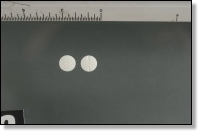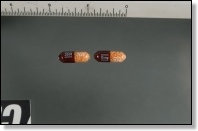Drug Facts: Stimulants (Prescription)
What is a prescription stimulant?
Stimulants (both prescription and non-prescription) increase the “levels of dopamine in the brain, a chemical which modifies pleasure, movement, and attention.” Commonly prescribed stimulants include forms of methylphenidate (such as Ritalin™ or Concerta™), mixtures of amphetamine salts (such as Adderall™), and others, including Focalin™ and Dexedrine™. Among the more common conditions for which these medications are prescribed are attention deficit disorder (ADD) and attention deficit hyperactive disorder (ADHD). When taken as prescribed, studies have shown that these medications do not promote substance abuse later in life, are not addictive, and are relatively safe to use. ,
How, why, and how often are prescription stimulants abused?
Prescription stimulant abusers report several effects that are understood to be the motivation for abuse: “users feel alert, focused, and awake.” Because of these features, prescription stimulants are often called study drugs when abused or misused, because users often take them in an effort to remain alert and awake during studying or other academic preparations. Other abusers prefer to use them as so-called performance enhancers, choosing to take them for their weight loss and appetite suppressant properties.
Measurement of prescription stimulant abuse varies based on geographic region (some national and state-level data is available) and by specificity (sometimes specific drugs are examined, sometimes a more general substance class). One study reports that, nationally, the annual prevalence Ritalin™ use among 8th, 10th, and 12th grade students was 2.7%, 4.3%, and 4.5%, respectively, from 2001-2004. A more localized study reports that, in Indiana in 2007, 2.9% of 12th grade students had used Ritalin™ in the last month, and 2.5% of 12th grade students had used amphetamines, a category that includes Adderall™, in the last month.
While many studies cite access from peers and other individuals as the primary means of obtaining prescription stimulants, one study notes that, of 185 online websites selling prescription drugs including Ritalin™, 89% did not require a prescription for purchase.
What problems can arise from prescription stimulant abuse?
Short-term effects of stimulant use include alertness, focus, reduction in appetite, sleeplessness, increased blood pressure, increased heart rate, and high body temperature. At high doses, use can produce anxiety, twitchiness, aggressiveness, confusion, dizziness, blurred vision, insomnia, headaches, sweating, dryness of the mouth or eyes.
Chronic use at high doses can produce hallucinations (methylphenidate and other study drugs), repetitive behaviors, and bizarre delusions. Long-term effects of use also include malnutrition and associated consequences, addiction, paranoia, sleep deprivation (leading to psychotic episodes), insomnia, digestive problems, and erratic weight change.
Stimulants may produce additional effects when used concurrently with other over-the- counter and prescription substances. Additionally, chronic use followed by cessation can produce withdrawal systems including fatigue and depression.
What else should I know about prescription stimulants?
Abuse of prescription stimulants is often associated with the use, misuse, or abuse of other substances, including marijuana, cocaine, ecstasy, and hallucinogens. It is also associated with binge drinking (in the past two weeks relative to the time of survey administration).
National Institutes of Health (2008). Stimulant ADHD medications: Methylphenidate and amphetamines. Retrieved online on 7/24/08 from: http://www.nida.nih.gov.
McCabe, S.E., Teter, C.J., and Boyd, C.J. (2006). Medical use, illicit use, and diversion of prescription stimulant medication. Journal of Psychoactive Drugs, 38(1), 43-56.
Staff. (2006). Prescription medicines: Basic facts. Retrieved online on 7/24/08 from: http://www.phoenixhouse.org.
Sussman, S., Pentz, M.A., Spruijt-Metz, D., and Miller, T. (2006). Misuse of “study drugs:” Prevalence, consequences, and implications for policy. Substance Abuse Treatment, Prevention, and Policy, 1(15), 1-7.

